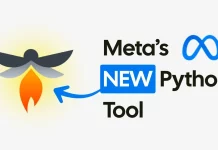Starlink has revolutionized how we access the internet. Rather than depending on traditional ground cables or cell towers, it delivers high‑speed connectivity directly from space through a growing constellation of more than 9,000 satellites orbiting Earth. No digging, no wiring — just plug it in, point it skyward, and you can get fast internet almost anywhere.
This breakthrough is especially valuable for off‑grid living and rural communities where broadband infrastructure still lags. Whether you’re in a mountain cabin or camping miles away from civilization, Starlink’s speeds can support streaming, video calls, gaming, and more — making remote living far less remote.
Starlink offers six dish options, each tailored to different needs, from ultra‑portable to extreme‑performance models. Here’s a breakdown to help you choose the right fit.
Mini
The Starlink Mini is the most portable dish to date, about the size of a laptop and weighing only 2.43 lbs. Perfect for camping, hiking, and road trips, it sets up in minutes with a simple plug‑and‑point process. Add a magnetic mount for even easier positioning.
- Includes Wi‑Fi router, kickstand, power supply, and DC cable
- Draws 25–40 watts — powerable via generator or power bank
- Price: $299; plan: $50/month for 50 GB high‑speed data before throttling
- Best for: Travelers, photographers, and field researchers prioritizing mobility over unlimited speed
Standard
The workhorse of the Starlink lineup, the Standard is designed for permanent home or small‑office use. Once set up with clear sky visibility, it performs through snow, rain, and wind.
- Speeds: 45–280 Mbps
- Supports up to 235 connected devices
- Kit includes dish, router, kickstand, cables, and power supply
- Price: $349
- Best for: Rural and remote households needing dependable year‑round internet
Standard Actuated
A discontinued, self‑orienting version of the Standard model. It auto‑tilted for optimal signal, but was replaced by the newer Gen 3 Standard dish that achieves similar connectivity without moving parts.
- Still found second‑hand — check for complete kit and proper ownership transfer
- Best avoided for new buyers due to scarce parts and potential firmware cutoff
Enterprise
Built for businesses that need uninterrupted service, the Enterprise kit delivers high‑capacity, low‑latency internet even during peak congestion.
- Speeds: 150–250 Mbps
- Includes professional‑grade cables (up to 164 ft) and mounts
- Compatible with third‑party routers via bypass mode
- Availability: Limited to business accounts/custom orders
- Best for: Farms, offices, construction sites, and remote operational hubs
Performance Gen 2
Formerly the Flat High Performance Kit, Gen 2 is ideal for semi‑mobile setups like RVs, ships, and remote work vehicles. Its wide field of view and GPS enable steady service while moving.
- Advanced snow‑melt function
- Price: $999; plans start at $65/month
- Best for: Fixed installations on vehicles and vessels needing broad satellite coverage
Performance Gen 3
The flagship Starlink dish for extreme conditions and maximum speed. Built for remote, high‑vibration, in‑motion use, it delivers near‑fiber performance where fiber isn’t available.
- Speeds: 400+ Mbps potential
- Dual‑power support (AC/DC)
- Wi‑Fi 6, 4×4 MU‑MIMO with Starlink router
- Price: ~$1,999; business‑tier plans from $65/month
- Best for: Mission‑critical users in harsh or isolated environments
Choosing Your Starlink
Selection depends on mobility, environment, and budget:
Model Mobility Speeds (Mbps) Price Best For
Mini Ultra-portable Variable $299 Camping, field work
Standard Fixed 45–280 $349 Rural homes
Standard Actuated Fixed (auto-aim) 45–280 Varies Legacy users only
Enterprise Fixed 150–250 Varies Business sites
Performance Gen 2 Semi-mobile ~250 $999 RVs, ships
Performance Gen 3 Mobile/extreme 400+ $1,999 Harsh environments
Starlink isn’t the cheapest option, and coverage still requires a clear sky. Speeds can fluctuate during congestion, and roaming users may see lower performance than fixed subscribers. Even so, for millions worldwide, it remains the most practical route to fast, location‑independent internet — bridging the digital divide one satellite at a time.





